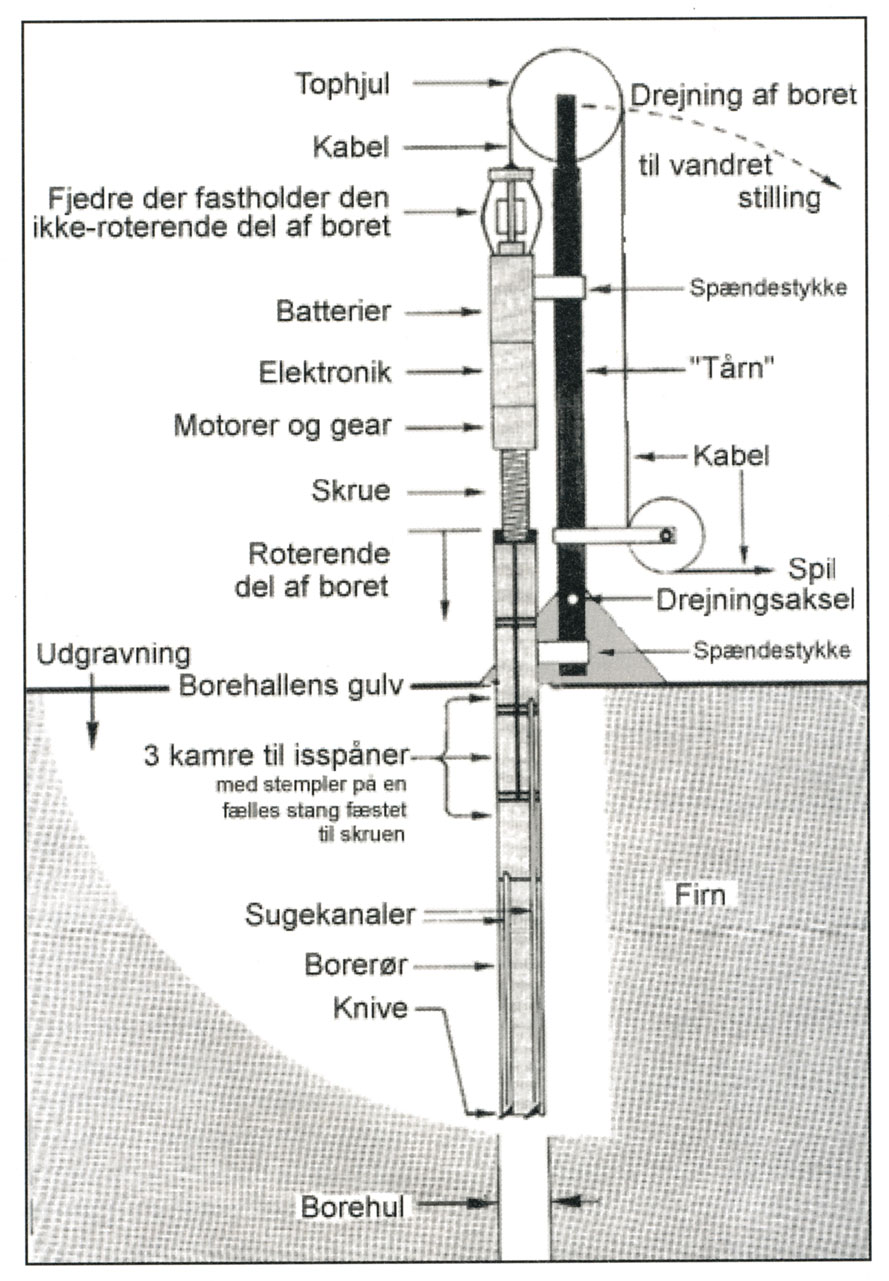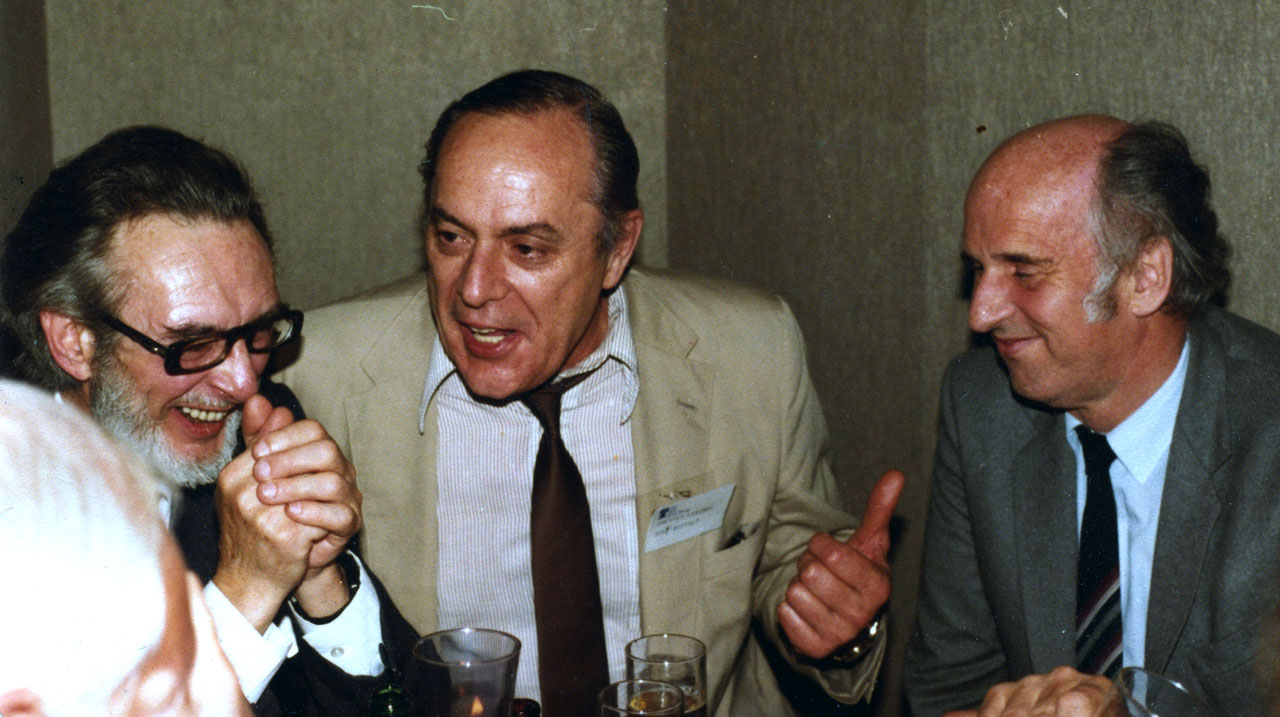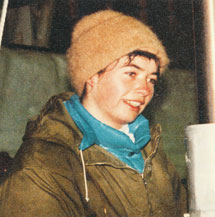Drilling at Dye 3
The Camp Century drill hit the bottom of the ice sheet in 1966, but when it was used at Byrd Station in Antarctica in 1968, it was lost. The same thing happened in 1968 with the American “wire line” drill that was used for the first Dye 3 drillings and Willi Dansgaard realises that if they are to have any hope of a new deep drilling project in Greenland and a thus a repeat of the Camp Century project, then the group has to contribute their own drill.

The Danish drill ISTUK
It is Sigfus Johnsen, who first puts forward the idea of a new drill during a “hotel room meeting” in Philadelphia and when the engineer Niels Gundestrup, who is the man behind the fully automated mass spectrometer, agrees that it can be done, the group decides to build a new ice core drill from scratch.
So in 1977 they begin to design the blueprints for a Danish drill, which is named ”ISTUK” after the Danish word for ice and the Greenlandic word for ”ice pick” or ”drill”. They apply for funding to manufacture the drill from the Commission for Scientific Investigations in Greenland (KVUG), which gives them the green light on the condition that they can get the Americans on board via the GISP collaboration.

Willi Dansgaard does get the Americans’ commitment, but this time it is on the condition that the drilling once again takes place at Dye 3. ”I pointed out that from a scientific point of view that it was not a favourable drilling site, but got the answer that it was Dye 3 or nothing,” he explains.
However, Dansgaard is happy they have accepted and believes that it has a lot to do with the international recognition he received after the Camp Century climate curve.
"Toys!"
In 1979, ISTUK is shipped up to Dye 3 on two Hercules planes. The set up of the drill takes a few months, after which the drilling can begin. The Americans, however, are not impressed and when the American head of drilling sees the drill, he spontaneously exclaims, “toys!” because it is so small compared to what they are used to. Many years later, he has to eat his words again as ISTUK has become a huge success and is copied around the world.
But before that happens, ISTUK suffers from many teething problems and in the beginning it is almost impossible to get a decent ice core out of it. The cores are oval shaped and break and the entire project is close to being shut down.
The National Science Foundation decides to shut down the project and Dansgaard’s American partner Chester Langway has to travel to Greenland with a representative from the NSF with the aim of shutting down the rag tag ice core drilling. But by a stroke of luck, the drill begins to work just as they get up there.
During the three days they are at Dye 3, the drill produces one fine ice core after another, 30 meters a day, and the day the two leave, the drill breaks down once again. But the project is saved and soon the drill has also been upgraded, including a new drill head made from manufactured steel, explains Jørgen Peder Steffensen.

At its peak, the work is reminiscent of an assembly line – “3-man drill teams worked on shifts around the clock, [with] an unprecedented efficiency, which saved considerable work on the home front,” explains Willi Dansgaard. 45 men are engaged in the work and when the samples are ready, they are sent directly to Copenhagen, Bern, and Buffalo, New York, where their isotopic and oxygen content and general chemical composition are studied.
Two years later, in August 1981, they reach the bottom and sadly it appears that ISTUK will suffer the same fate as the other drills. It is stuck fast – but to everyone’s delight, they succeed in rescuing the stranded drill from the depths the following year using some technical ingenuity.
”Dansgaard-Oeshger events”
Resulting from the drilling are no less than 61,000 samples that can be sent for isotopic determination in Copenhagen and, as expected, it turns out that the Dye 3 core – because of the very high annual snowfall in the area – does not go as far back in time as the Camp Century core did. But the core covers the last ice age nicely and thus they can resolve the 10-year-old conflict about the isotopic variations that Dansgaard believed he had found in the ice age ice.
They discover the fluctuations in the new core, thereby proving that Dansgaard had been right when he argued that something or another happened during the last ice age, which caused the temperature to fluctuate very dramatically – perhaps by up to 10 degrees C within a decade.

If there had been a lot of interest in Dansgaard after Camp Century, the interest turns enormous after Dye 3. Many researchers had questioned the results from the Camp Century core and believed that the large isotopic variations were simply a reflection of the folds in the ice, so it causes a sensation when the variations are detected in Dye 3.
The results were further underscored when the Swiss researcher Hans Oeshger finds the same fluctuations in the oxygen content of the ice.
”The apparently strong and abrupt environmental changes during the ice age were also later found in seabed cores and are now called the ”Dansgaard-Oeshger events” despite the fact that an entirely comprehensive explanation for them has yet to be found, in my opinion,” explains Willi Dansgaard.
Dorthe Dahl-Jensen
One of the young researchers who participated in the Dye 3 Expedition from 1979 to 1981 was the glaciologist Dorthe Dahl-Jensen, who would prove to have a great impact on Danish climate research.
But it took some diplomacy to convince Dansgaard that Dahl-Jensen should come with them to the drilling site, as Dansgaard had just a short time before had an unfortunate experience with a young woman who had been sent home by the Americans because she attracted too much attention from some of the soldiers and his immediate conclusion was, “no girls in the field”. However, he was persuaded and this very gifted woman subsequently made big impression on Dansgaard, who invited her to join his research group as a student.
Using the ice cores, Dorthe Dahl-Jensen helped conclude that the last ice age came to an end almost exactly 11,700 years ago and that the previous interglacial period, called the Eemian period, was even warmer than our current interglacial period.
In 2007, she was appointed as head of Willi Dansgaard’s old department – which is now called the “Centre for Ice and Climate” and under her leadership it remains one of the world’s leading research institutes in the comate field – moreover with a gender distribution that is almost 50/50.


